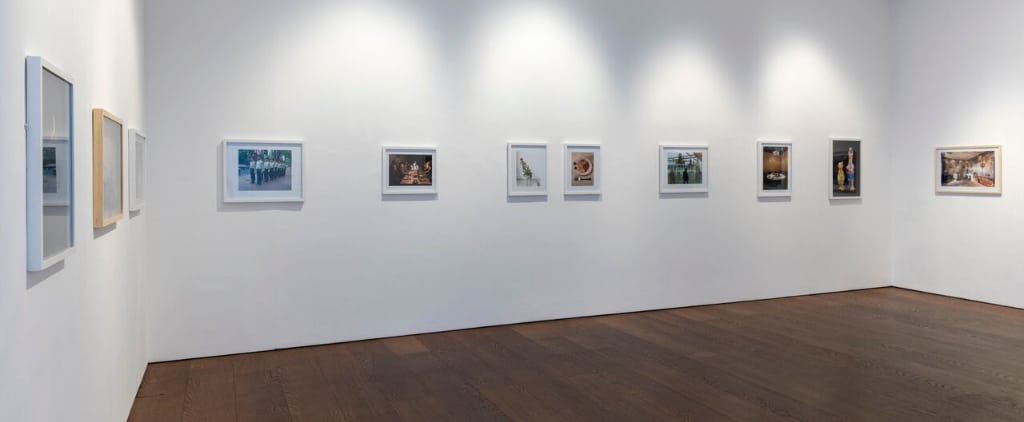Miyako Narita works in fine art photography, video and music.
Her photography was on show in Cork Street last week. Flowers Gallery held the 24th edition of Artist of the Day, a West End exhibition programme selected by leading contemporary artists since 1983.
The revolving two week exhibition schedule provides a platform for a selected group of artists, each presenting a one day solo exhibition at Flowers Gallery’s Mayfair location, with a programme of events taking place each day.
Narita was selected by sculptor and musical collaborator, Richard Wilson RA, seen below with Miyako and her parrot, Rembrandt.
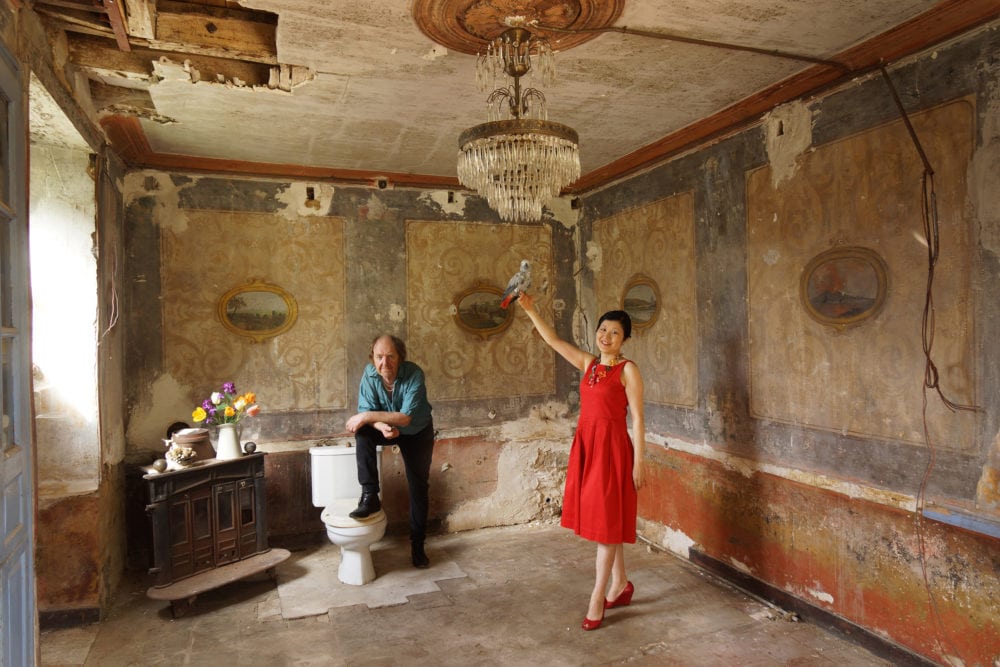
Richard Wilson and Miyako Narita with Parrot
What are we supposed to make of photography? The much reviled philosopher, Professor Sir Roger Scruton, wrote a seminal article, ‘Photography and Representation’ in 1983. (Scruton, 1983.)
In that essay, Scruton argues that since photography is a recording process, it is incapable of representation. Representation, he tells us, is an intentional act; and one that represents its subject as having certain properties.
Photography merely records the properties the subject exhibits. That is the claim he makes.
Therefore, a beautiful photograph is merely a copy of a beautiful subject. He also claims, surely this is true, that photography is fully extensional. That is to say, if a is photograph of b, then there is some b, of which a is a photograph.
We cannot have photographs of unicorns.
We could, as a matter of nested representation, have a photograph of a horse with a prosthetic horn attached; but this is not a photograph of a unicorn. It is a photograph of a horse made up to represent a unicorn
Whatever we might think of that – and the argument is caricatured in this synoptic version – it has nevertheless set philosophers the task to reinvent the theory of photography as a fine art.
Where that has relied upon a theory of painting or depiction more generally, I think it has become muddled with the painter’s art. Photography, I should like to say, seeks its fine art audience in that which lends it strength.
Photography and Everyday Aesthetics
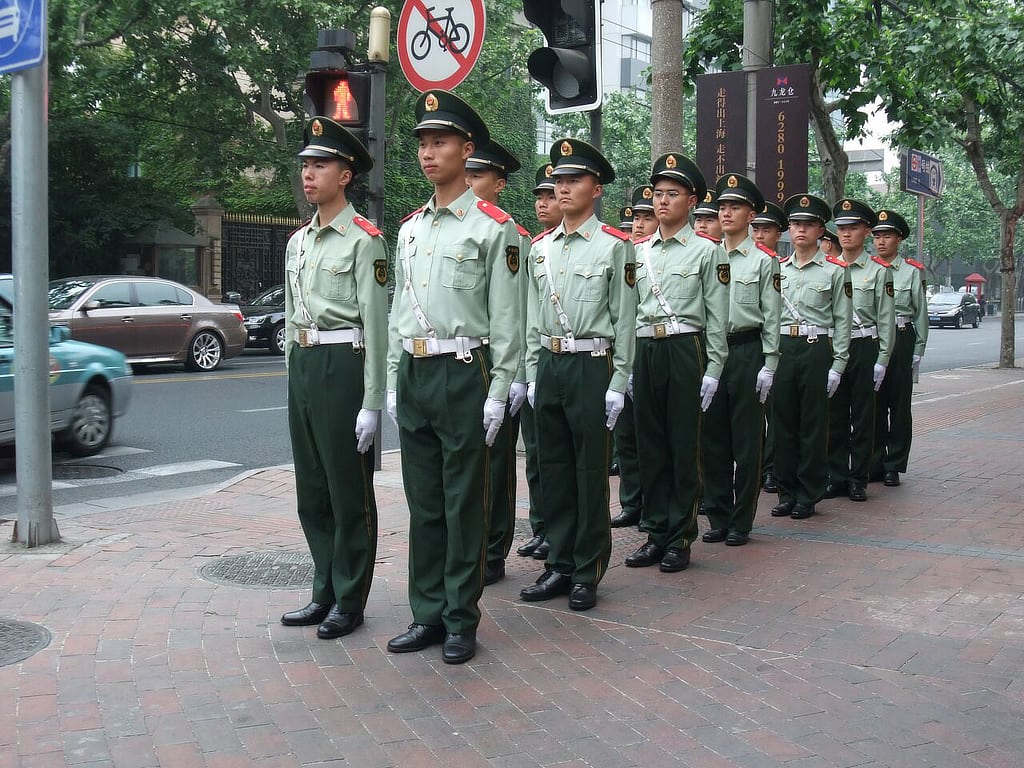
Miyako Narita, Policemen, 2011, Chromogenic print
Much work in the visual fine arts has attempted to cross the line between fine art (as traditionally conceived) and the everyday. Think of Kurt Schwitters’ collages, of Robert Rauschenberg’s combines. We also have Marcel Duchamp’s readymades.
Found objects are to be found as constituent parts of most, if not all, contemporary works of collage and assemblage. Everyday aesthetics has invaded the world of fine art; with poetry and music similarly enchanted.
Blank verse was influenced by Parisian vers libre, bringing Imagist poetry to London.
Poetry was to be about observation and whilst Imagism did not last long, its influence has been persistent. The New York School of poets worked alongside fine artists concerned to make work celebrating the beautiful ordinary.
In each case, the aesthetic experience of the spectator is to be found in her noticing the artist’s bearing witness to the beauty of everyday experience. Extend beauty to include the emotional engagement we ordinarily have with the world.
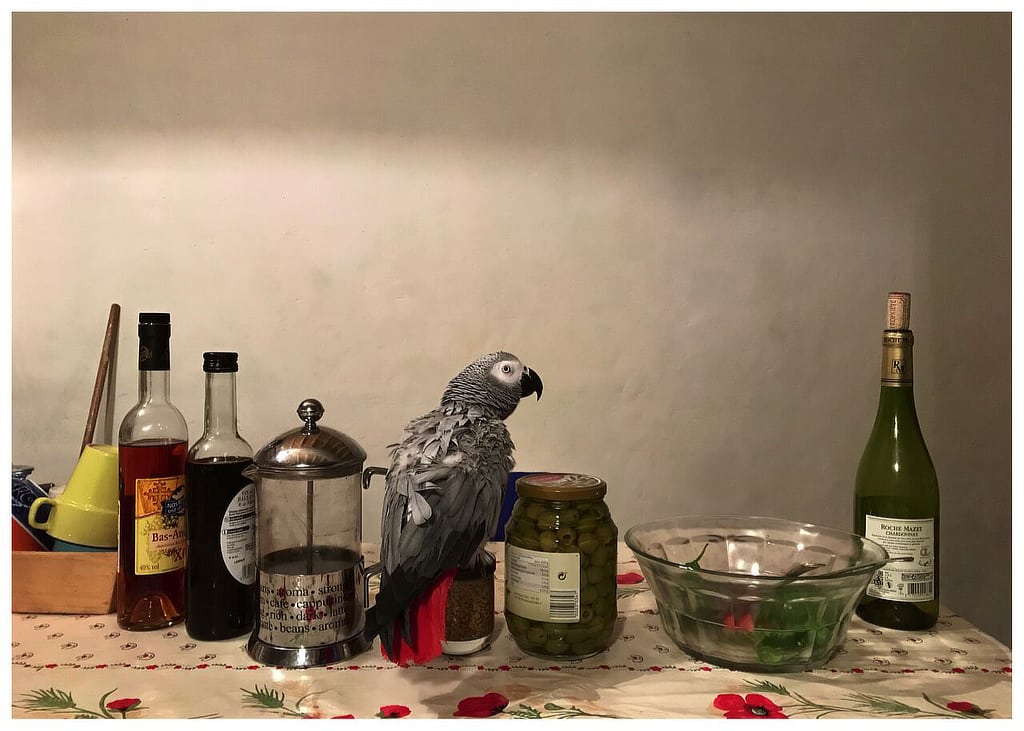
Miyako Narita, Still Life with Parrot, 2018, Chromogenic print
Miyako Narita’s artist’s statement reads:
I photograph anything that fascinates me in my everyday life normally where it is and how it is. Most of these captured moments are not set up, manipulated or controlled in any way. Carried with me throughout the day, my camera records moments that I interpret as fragments of my daily life. There are no rules in my practice. Photographing starts each morning at home and continues throughout the day wherever I am.
Narita’s exhibition has various episodes of a complex, vexing world. The world, after all, is varied – moments of heartbreak, moments of glory. There are no signs of personal obsession, once so often associated with the artist as a peripheral, unstable seer. What is seen here is not some world apart, according to some dreamlike fantasy. It is our world, seen through a good eye. To be commended. No signs of idiosyncratic obsession – just an unerring, insistent eye for the telling detail.
Curiosity and the Cat
Curiosity, we are told, killed the cat. The dictum is used to quell the natural interest children have in a world that remains, for the time being, beyond them. However, the artist’s eye sustains a child-like curiosity in the world, noticing everything about its appearance that gives rise to a sort of wonder.
It is not that the artist is in the grip of some inner emotion that requires expression. Rather (pace the abstract expressionists), the artist finds herself in a world that provides complex, intricate, and widely varied experiences.

Miyako Narita, Shanghai Ducks, 2011, C-type print, 48 x 60 cm
In her Shanghai Ducks, the image of hanging dismembered, beheaded ducks, air-drying in the Shaghai breeze, has an uncanny feel. The poor creatures look like those Parisians who collaborated with the Nazis during the occupation and were hanged for their treatchery after liberation.
There is a melancholy that lies behind the rather odd-looking arrangement of meat, as if strung up along a washing line.
More humorously, if yet macabre, is the image of drying octopuses, their splayed filets making them look like cartoon images of a smiling sun against a cloudless sky. In both of these images, each with its portion of wit, a solemn observation belies our amusement.
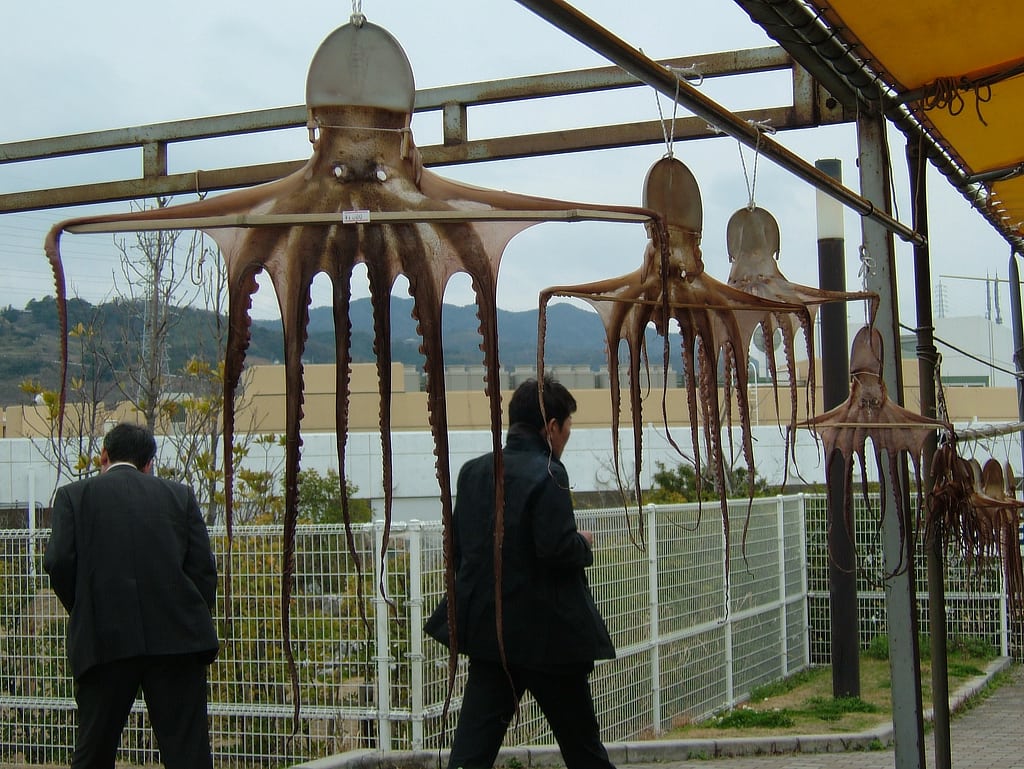
Miyako Narita, Tako, 2012, C-type print, 48 x 60 cm
Laugh? I nearly died.
We find the world amusing, even as we find it fearful. We can be quite transported by laughter. Of Zeuxis, the Greek painter (5th century BC) it is said that he died laughing ‘at a painting of an old woman that he had just completed when his breathing failed and he choked to death.’ (Wallace, et al, 1980)
Chrysippus, the Greek philosopher (3rd century BC) ‘is said to have died from a fit of laughter on seeing a donkey eat some figs.’ (ibid.)
Finally, on a Wednesday evening in April 1782, Mrs Fitzherbert, an English widow (? – 1782) ‘of Northamptonshire went to Drury Lane Theatre with friends to see The Beggar’s Opera. When the popular actor Mr. Bannister made his first appearance, dressed outlandishly in the role of “Polly,” the entire audience was thrown into uproarious laughter. Unfortunately, Mrs. Fitzherbert was unable to suppress the laugh that seized her, and she was forced to leave the theatre before the end of the second act. As the Gentleman’s Magazine reported in its issue of the following week: “Not being able to banish the figure from her memory, she was thrown into hysterics, which continued without intermission until she expired Friday morning.’
It is to be hoped that Mrs. Fitzherbert’s amusement persisted unabated until the end. Whether these notices are apocryphal or not; they report the kind of thing that might be told aside as curiosities of our odd world.
When Love Never Dies premiered in the West End, BBC London News covered the event by providing vox populi snipets as theatre goers took their leave. Michael Caine said something like, ‘Marvelous, truly marvellous. I must have seen Phantom twenty-two or twenty-three times. I am sure I shall return to see this again and again.’
The microphone was put before other distinguished guests, each of whom gushed and simpered. At last a gay couple, one tall and thin, the other, slightly shyer, shorter and plumper came down the stairs. ‘How did you enjoy this evening?’ asked the interviewer. The shorter chap looked at camera and said, ‘Love Never Dies?’ and then looked up into his partner’s eyes. The taller man looked at the shorter and then at the camera, ‘Paint Never Dries.’
I laughed aloud at Narita’s very funny pair of cartoon birds. And I kept laughing as I cast my mind back to the vox pop reportage.
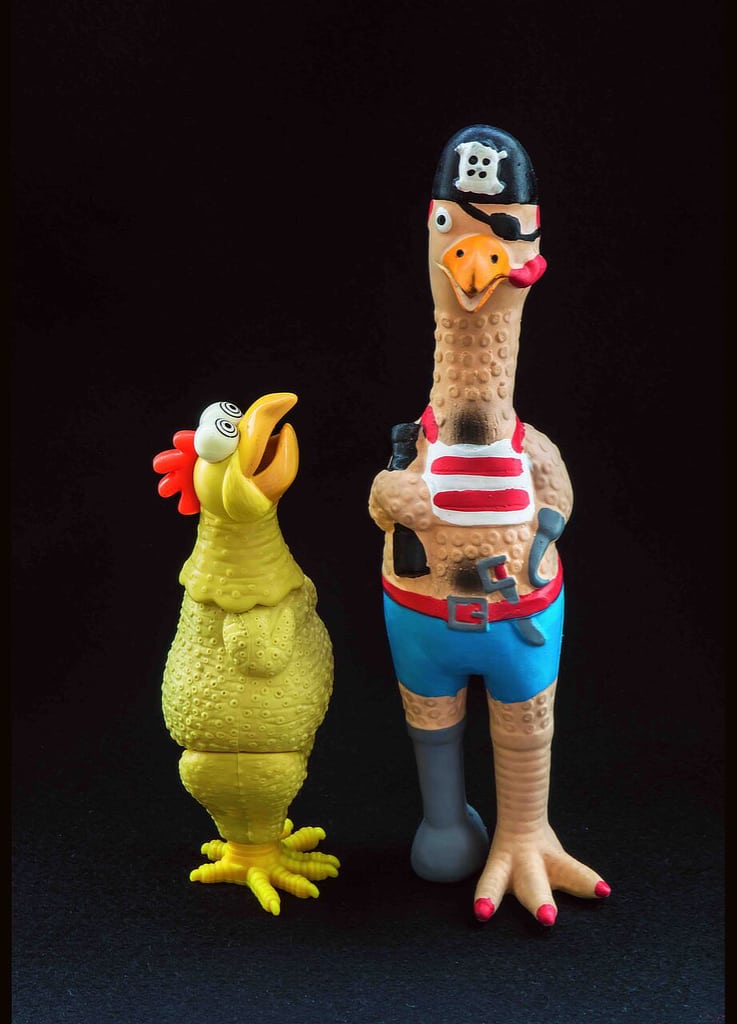
Miyako Narita, Untitled, 2016, C-type print
Photography, conceived as an art of everyday aesthetics, commits us to the view of a visual art that has its own poetic dimension, in which moments are presented as epiphanic; epiphanies, we might think, of the ordinariness of a wonderful life.
____________________________
Artist of the Day 2018 continues at Flowers until Saturday 7th July. There will be a final group show on Saturday 7th, 2018.
All images are copyright of Miyoko Narita, coutesy of Flowers Gallery
References:
Scruton, R. (1983), ‘Photography and Representation’ in his, The Aesthetic Understanding, London: Methuen, 1983
Wallace, I, Wallechinsky, D, Wallace, A, and Wallace, S, (1980), The Book of Lists #2, London, New York, Toronto, 1980, p. 446.
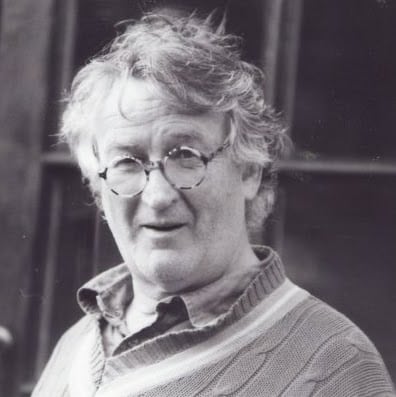
Ed studied painting at the Slade School of Fine Art and later wrote his PhD in Philosophy at UCL. He has written extensively on the visual arts and is presently writing a book on everyday aesthetics. He is an elected member of the International Association of Art Critics (AICA). He taught at University of Westminster and at University of Kent and he continues to make art.

